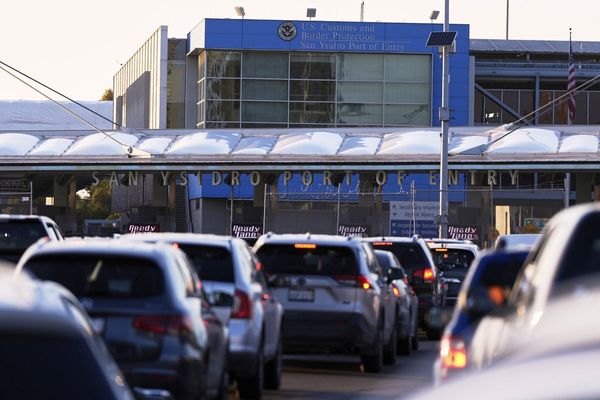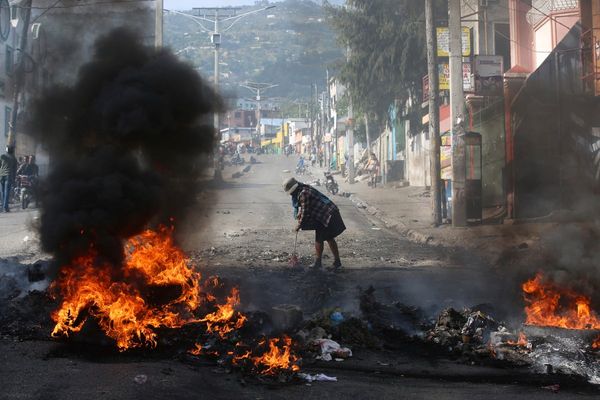
Welcome, VAR, to the World Cup. Take a seat. We’ve been expecting you. On matchday three of Russia 2018, Fifa’s early-stage experiment with video technology stood briefly centre stage. This, finally, was the new world.
Although, in the event, the debate around two marginal penalty decisions for France and Argentina will be jarringly familiar to anyone with any experience of the previous 140 years or so of football refereeing. Plus ça change, plus c’est the same old story all over again: with the same argument, the same subjective calls, the same claims of injustice.
Saturday afternoon brought two games 650 miles apart. Both had similar incidents involving a trip in the area. Both saw two different applications of the process to two very similar scenarios.
In the early kick-off in Kazan, France were awarded a penalty shortly before the hour for a trip on Antoine Griezmann by the trailing leg of Josh Risdon. Initially no penalty was given by the on-field referee. Instantly the video assistant ref informed his colleague that the incident should be reviewed. A penalty was then awarded.
Three hours later in Moscow, Cristian Pavón went down in the Iceland penalty area after a challenge from Birkir Már Sævarsson. Once again play was waved on. This time there was no VAR interjection. Iceland took a goalkick and the game continued.
At which point enter, if not quite controversy, then evidence that a system designed to still the tedium of endless debate has its own potential for irresolvable differences of opinion.
What can VAR be used for? A clear and obvious error relating to a goal, penalty decision, red card or mistaken identity.
Was the Antoine Griezmann penalty decision correctly altered? Those familiar with VAR say it was. The Australia defender Josh Ridson lifted his leg and tripped the France forward. Whether he intended to do so is irrelevant.
Did the VAR decide it was not worth looking at the incident when Iceland's Birkir Már Sævarsson brought down Argentina's Cristian Pavón? Yes. It is understood the VAR said in the referee's earpiece “play on, play on”, signifying there was no need for a second look.
When can the VAR intervene? Other than with violent conduct, only before the next restart of play. If the ball does not go out after a penalty decision – as with France’s spot-kick – they get to use that extra time.
Is Fifa happy with the way it is working? Yes, Fifa is understood to be happy on the basis of the first three days' play, despite the controversy. It thinks the right decisions have been taken. So VAR, so good is the feeling. Martha Kelner
The first point is that ultimately both refereeing decisions were correct, if only because neither was obviously wrong. Whatever one person with the right authority decides: that is correct. So far, so much the same.
The element of controversy comes because both incidents would seem to have the same level of claim on a video review, the second non-reviewed one arguably more so. Argentina’s fans will see a trip on Pavón. It is a matter of opinion, as ever. But replays suggest there was at least as much contact and/or reviewable grey area as in the Griezmann incident.
At the end of which VAR has offered us uncertainty and 50-50 judgment at one remove. We have simply kicked this endlessly tedious debate into some longer grass a little further off. The parameters have been narrowed. Obvious mistakes can be weeded out. But where once the subjectivity came on-field, now it comes in the VAR’s office.
Opponents of VAR will question whether it really is worth interrupting the game for this. Is it worth obsessing over the thoughts of the referees, incurring all the expense (financial and otherwise) of officials and screens, simply to introduce an incremental degree of semi-accuracy to an essentially random series of on-field collisions?
What we have learned from the first real VAR moment at this World Cup is that no two VARs are the same, that there will not be a uniform review standard. On top of this, as we always knew in a chaotic, always marginal game, that there is no objective truth to be rooted out. Papering as thickly as possible over the cracks is all that can be hoped for here.
At the end of which the VAR-flavoured universe looks not dissimilar to the previous one. Fans of both Australia and Argentina can leave their World Cup matches aggrieved over decisions made. The referees can claim to have made the correct decision simply by making one where one was required. The closest to a clear error is the decision by the VAR in Moscow not to seek a review of the Pavón trip. But even then his judgment call is simply that.
Debate. Matters of opinion. Hard luck stories. Football can’t help but provide this. No matter how finely we split the atom, its core will remain fluid and unstable. For now, with another VAR penalty awarded later in the day for Peru – correctly this time – it is simply time to buckle up and enjoy the ride with a technology that will always carry its own margins of uncertainty.







